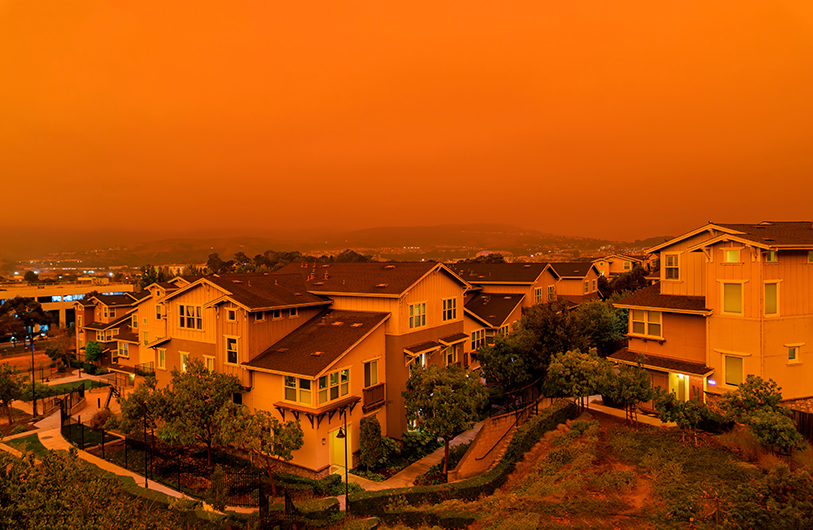San Francisco employers should prepare for yet another local ordinance starting this October! San Francisco voters recently passed Proposition G, a new permanent public health emergency leave ordinance, which will go into effect on October 1, 2022. Remember, over a dozen ordinances already impact San Francisco employers — including their recently updated Family Friendly Workplace Ordinance (FFWO).
This new public health emergency leave ordinance applies to San Francisco employers with 100 or more employees worldwide. Covered employers must provide public health emergency leave to their employees who work in San Francisco. However, this ordinance will not apply to certain non-profits or unionized workers covered by bona fide collective bargaining agreements.
Under this ordinance, employers must allocate “public health emergency” leave to each employee every calendar year. A “public health emergency” is a local or statewide health emergency related to any contagious, infectious or communicable disease, as declared by the city’s local health officer or the state health officer pursuant to the California Health and Safety Code, or an air quality emergency (such as a Spare the Air Alert).
This leave is available to employees in addition to any paid leave that the employer offers or provides. In certain circumstances, if an employee can telework without increasing the employee’s exposure to disease or unhealthy air quality, the employee may not use public health emergency leave. An employee may use this new leave before using other accrued paid leave.
Employees can request public health emergency leave to care for themselves or for a qualifying family member. San Francisco defines “family member” the same way it did under its Paid Sick Leave Ordinance, which includes the employee’s child, parent, legal guardian/ward, sibling, grandparent, grandchild, spouse, registered domestic partner or a designated person.
During a public health emergency, an employee may use this new leave if they’re unable to work due to any of the following reasons:
- Based on recommendations or requirements of a federal, state or local health order (including an order issued by the local jurisdiction in which an employee resides) related to the public health emergency;
- The employee has been advised by a healthcare provider to isolate or quarantine;
- The employee is experiencing symptoms of and seeking a medical diagnosis, or has received a positive medical diagnosis, for a possible infectious, contagious or communicable disease associated with the public health emergency;
- The employee is caring for a family member who is subject to an order as described in (1), has been advised as described in (2) or is experiencing symptoms as described in (3);
- The employee is caring for a family member if the school or place of care of the family member has been closed, or the care provider of such family member is unavailable, due to the public health emergency; and
- An air quality emergency, if the employee is a member of a vulnerable population and primarily works outdoors.
The allocation of hours differs for full-time and part-time employees:
- Full-time employees earn the number of hours over a two-week period that the employee regularly works or takes paid leave, not to exceed 80 hours.
- Part-time employees earn the average number of hours over a two-week period that the employee worked or took paid leave during the previous calendar year, or since the employee’s start date if after the beginning of the previous calendar year.
However, after October and for the remainder of 2022, allocation is based on a one-week period, not to exceed 40 hours.
Every employer in San Francisco must post a notice in a conspicuous place to inform employees of this separate public health emergency leave. This notice must be posted in English, Spanish, Chinese, Filipino and any other language spoken by more than 5 percent of the San Francisco workforce.
Employers who fail to comply with San Francisco’s Public Health Emergency Leave Ordinance may be subject to administrative citations, penalties, and civil actions.
Note: Portions of San Francisco’s Public Health Emergency Leave Ordinance have industry-specific rules that impact the healthcare and emergency providers.
Employers should monitor the San Francisco Office of Labor Standards Enforcement’s (OLSE’s) website for guidance on this upcoming ordinance.
CalChamber’s free Local Ordinance Wizard can help determine the local ordinances and labor law posters that apply to your business or location(s).
Sarah Woolston, Employment Law Subject Matter Expert, CalChamber
CalChamber members can read more about other San Francisco local ordinances, including Paid Parental Leave, Drug Testing Regulations and the Retail Workers Bill of Rights, on HRCalifornia. Not a member? See how CalChamber can help you.



